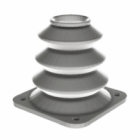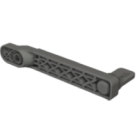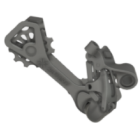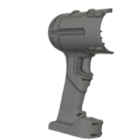Future uses of 3D printing
As the core technologies mature and new materials emerge, the future of 3D printing isn’t just about doing more of the same — it’s about unlocking entirely new applications. What started as a tool for prototyping is evolving into a platform for disruption across sectors that once seemed untouchable by digital manufacturing. From biomedicine to construction, the frontier is expanding — fast.
3D printing in regenerative medicine
One of the most promising frontiers is bioprinting — the additive fabrication of tissue-like structures using bioinks composed of living cells. While full organ printing is still years away, researchers are already using this technique to develop vascular grafts, cartilage scaffolds, and skin tissue.
Looking ahead, we can expect 3D printing to play a foundational role in customized tissue engineering, patient-specific implants, and even regenerative wound healing. The idea of on-demand, biologically compatible components is no longer science fiction — it’s in preclinical labs right now.
Large-scale construction and habitat building
Concrete 3D printing is enabling the rapid construction of housing, infrastructure, and even lunar base prototypes. By extruding cement-based mixes layer by layer, companies are building entire structures in a fraction of the time — with reduced material waste and labor.
In the coming decade, 3D-printed construction may address housing shortages, enable faster disaster recovery, or support autonomous building in extreme environments — including Mars. The potential isn’t just technical — it’s humanitarian.
Food printing and personalized nutrition
Additive manufacturing is entering the culinary world, where 3D printing can be used to create visually striking food, layer controlled textures, and deliver custom nutritional profiles. This is especially relevant in healthcare, where texture-modified meals for patients with dysphagia can be printed in precise, appetizing forms.
Long-term, food-grade 3D printing could play a role in personalized diets, reduced food waste (by reprocessing surplus ingredients), and even space travel, where long-term nutrition must be compact, customizable, and shelf-stable.
Electronics and embedded functionality
Another emerging use of 3D printing lies in functional parts with embedded electronics. Researchers and manufacturers are beginning to print conductive traces, sensors, and even basic circuit boards directly into plastic or composite components.
This means future devices — from wearables to aerospace enclosures — could be printed with integrated wiring, buttons, or communication capabilities, reducing assembly steps and improving reliability. In time, this may evolve into printing fully integrated electromechanical systems in one go.
Tools for synthetic biology and lab automation
As synthetic biology advances, 3D printing is becoming an essential tool for creating custom labware, microfluidic devices, and bioreactors. Unlike traditional lab equipment, these tools can be iterated quickly, adapted to novel experiments, and produced on-site — even in field research conditions.
Future lab setups may rely less on catalog-ordered glassware and more on open-source, 3D-printed systems tailored to the exact needs of an experiment. In a field driven by agility, additive manufacturing offers true scientific leverage.
Explore also
- Is 3D printing the future?
- What is the future of 3D printing?
- 3D printing vs traditional manufacturing
- What will 3D printers be used for in the future
- Trends in additive manufacturing
- AI in 3D printing
- Automation 3D printing
Related categories













